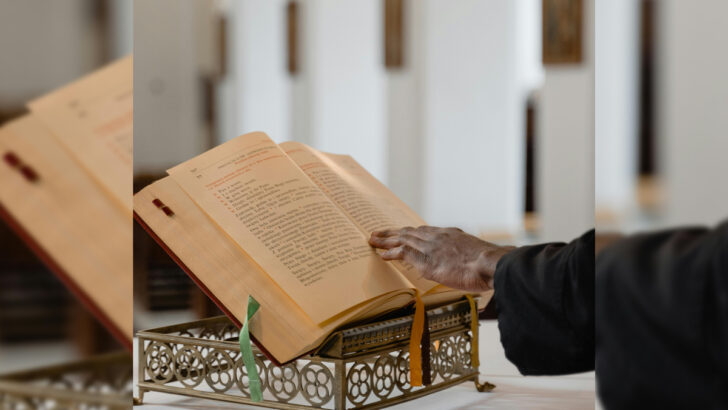Q: I once heard a priest talk about Ordinary Time and that it didn’t mean ‘plain’ or that other times were more important. Of course, I can’t remember how he explained it. Can you explain some more?
A: I personally was not there when your priest was giving his talk, so I can’t comment specifically on what he said. But my guess is that your priest noted that we use the word ‘ordinary’ in our English term ‘Ordinary Time’ because it refers to ‘ordinal numbers’, i.e. numbers that denote a rank or sequence.
Depending on how the days of the week fall in a given year, Ordinary Time is 33-34 weeks long, and the days in Ordinary Time are generally identified by their number. For instance, on the second Sunday of July 2024, we will be celebrating the fifteenth Sunday in Ordinary Time.
The Latin term for Ordinary Time is similarly straightforward and practical: ‘tempus per annum’ roughly translates into ‘time during the year’.
But although the ‘ordinary’ in ‘Ordinary Time’ does not come from the same source as our word for ‘unremarkable’, in my own opinion the double meaning of the word ‘ordinary’ is a linguistic happy accident. In a certain sense, Ordinary Time is indeed ‘ordinary’ in this way.
Ordinary Time begins after the feast of the Baptism of the Lord, which marks the closing of the Christmas season. The first few weeks of Ordinary Time occur during the winter, until it is interrupted by Lent and the Easter season. After the Easter season closes with Pentecost, Ordinary Time resumes and carries on through late spring until early winter with the beginning of Advent.
Not only does Ordinary Time represent a quieter period between the Church’s major solemnities and more ‘intense’ seasons, but the proper liturgy for a particular day in Ordinary Time is often replaced by various other feasts and commemorations.
Still, just because Ordinary Time might be ‘ordinary’ in more ways than one, this does not mean that we should see it as boring or unimportant. Like all liturgical seasons, Ordinary Time calls us to reflect on particular mysteries of the faith in a more focused way than we would in other seasons. As the U.S. Conference of Catholic Bishops notes: “The Sundays and weeks of Ordinary Time, on the other hand, take us through the life of Christ. This is the time of conversion. This is living the life of Christ. Ordinary Time is a time for growth and maturation, a time in which the mystery of Christ is called to penetrate ever more deeply into history until all things are finally caught up in Christ.”
During the brief period of Ordinary Time between Christmas and Lent, we can remember the hidden years of Jesus with his family in Nazareth prior to the beginning of his public ministry – a ministry that began with his forty days of testing in the desert, which we recall during the season of Lent that immediately follows.
Pentecost calls to mind the birth of the Church and the commission of the Apostles to go out to the whole world to spread the Gospel; and the subsequent return to Ordinary Time reminds us to ‘get to work’ in the normal, daily task of evangelising in the course of our everyday lives. The green vestments used in Ordinary Time further remind us of life and fruitfulness during the long summer growing season.
During the autumn, when the days grow shorter, the readings of Ordinary Time take on a more apocalyptic tone, reminding us of Christ’s second coming at the end of all time. Ordinary Time thereby appropriately culminates in the feast of Christ the King. Then the Church’s reflection on Christ’s second coming as Judge flows seamlessly into a sense of joy at his first coming as a humble infant during the Advent season. And so, the whole cycle begins again.
*
Jenna Marie Cooper, who holds a licentiate in canon law, is a consecrated virgin and a canonist whose column appears weekly at OSV News. Send your questions to CatholicQA@osv.com.



